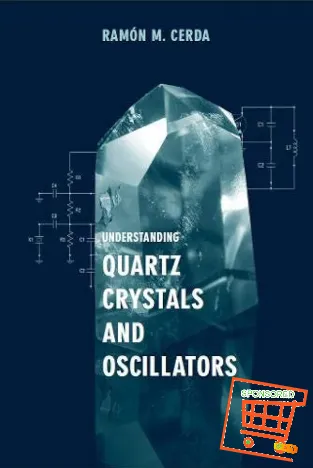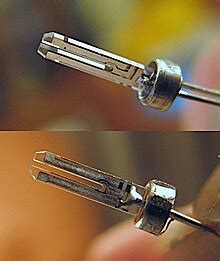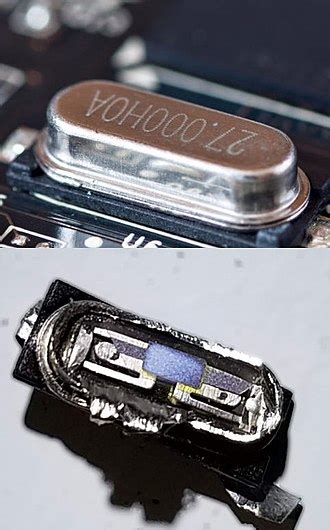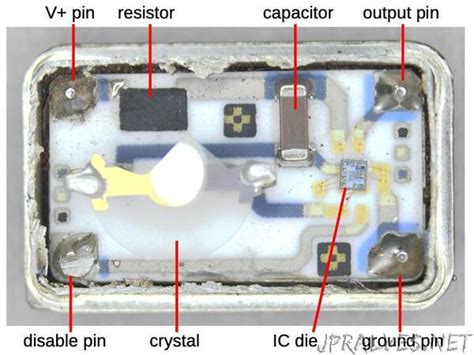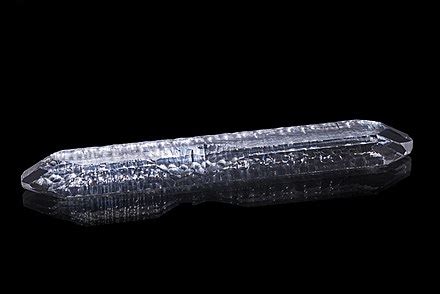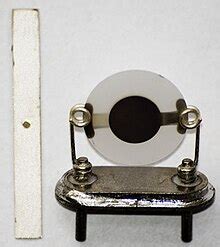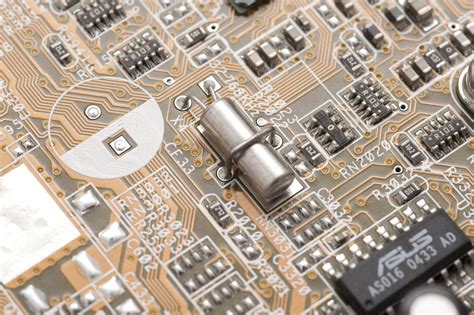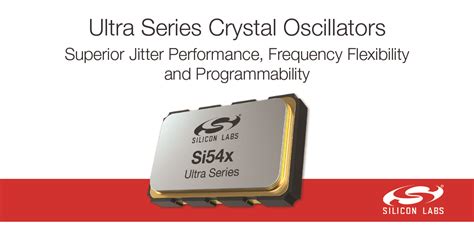Crystal Oscillators the Heart of Gadgets
In the ever-evolving landscape of technology, where innovation drives the development of smarter, faster, and more efficient devices, you may find yourself wondering about the unsung heroes that enable these advancements.
Among them, Crystal Oscillators the Heart of Gadgets stand out as crucial components that ensure your gadgets operate with precision and reliability.
Whether you’re using a smartphone to communicate, a smartwatch to monitor your health, or a computer to run complex applications, crystal oscillators are at the heart of these devices, providing the necessary timing signals that synchronize their functions.
Their significance extends beyond mere functionality; they are essential for maintaining the stability and accuracy that you have come to expect from modern electronics.
From the seamless operation of your favorite apps to the smooth execution of real-time processes, crystal oscillators play a pivotal role in ensuring that everything works harmoniously.
In this article, we will delve into the intricacies of crystal oscillators, exploring how they function, their various applications, and why they are indispensable in the gadgets that enhance your daily life.
Understanding these components will give you a greater appreciation for the technology you use and the engineering feats that make it all possible.
Table of Contents Crystal Oscillators the Heart of Gadgets
Understand quartz crystals’ unique properties for effective applications in gadgets
When exploring the potential of quartz crystals, it is essential to recognize their distinct characteristics that make them invaluable in modern technology.
Their unique oscillators behavior allows them to maintain a stable frequency, thanks to their piezoelectric properties.
As you delve into their chemical stability and resistance to environmental factors, you will appreciate how these crystals can operate reliably across various conditions, making them ideal for precision timing applications.
Moreover, the electrical, mechanical, and thermal properties of quartz crystals contribute to their performance in diverse devices, ensuring that they can meet the demands of today’s high-tech gadgets.
In your pursuit of effective applications, consider how the size and cut of quartz crystals can influence their vibrational frequencies.
This nuance is critical when designing oscillators for specific functionalities.
By fully understanding the interaction between these properties, you can harness the potential of quartz crystals to enhance the performance and reliability of electronic devices, thereby leading to innovations that push the boundaries of technology.
Quartz crystals exhibit remarkable chemical stability under varying conditions
You will find that the chemical stability of quartz crystals is a crucial factor in their long-lasting performance, especially when subjected to varying environmental conditions.
This stability not only ensures that the crystals maintain their structural integrity but also allows them to function consistently in a wide range of temperatures and humidity levels.
Such resilience is particularly advantageous for applications where reliability is paramount, as it minimizes the risk of performance degradation over time.
In addition to their chemical robustness, the electrical, mechanical, and thermal properties of quartz crystals enable them to be engineered for specific applications with precision.
By understanding how these properties interact, you can optimize the design of oscillators to enhance their performance in different scenarios.
This knowledge allows for the creation of devices that can withstand harsh conditions while still delivering accurate and stable frequency outputs, ultimately extending the lifespan and effectiveness of various high-tech gadgets.
Explore electrical properties to enhance device performance and efficiency
Delving into the electrical properties of quartz crystals can significantly elevate the performance and efficiency of your devices.
By leveraging these properties, you can optimize the frequency stability and phase noise characteristics of oscillators, which are vital for applications ranging from telecommunications to precision timing systems.
Understanding the interplay between electrical behaviors such as dielectric constant and conductivity enables you to make informed choices about oscillator design, ensuring that they meet the stringent demands of modern technology while minimizing power consumption.
Furthermore, recognizing how the mechanical resonance of quartz interacts with its electrical properties allows you to fine-tune your devices for maximum efficacy.
This synergy not only leads to improved signal integrity and reduced distortion but also enhances overall energy efficiency, thereby extending the operational lifespan of your products.
By focusing on these critical aspects, you can create oscillators that deliver superior performance, providing a competitive edge in a rapidly evolving technological landscape.
Mechanical properties influence oscillator durability and reliability in various environments
The durability and reliability of oscillators are significantly impacted by their mechanical properties, especially in variable environmental conditions.
When you consider factors such as material elasticity and fracture toughness, you can better assess how oscillators will perform under stress, temperature fluctuations, and even humidity.
High-quality quartz crystals exhibit robust mechanical characteristics that help maintain their integrity over time, securing consistent performance and reliability in diverse applications.
By prioritizing mechanical properties during the design process, you can ensure that your oscillators withstand the rigors of both everyday and extreme environments, which is crucial for maintaining operational functionality.
In addition, the interplay between mechanical and thermal properties cannot be overlooked, as temperature changes can induce stress and alter the resonant frequencies of crystals.
Awareness of thermal expansion coefficients and mechanical resonance behavior allows you to create oscillators that are not only resilient but also adaptable to thermal variations.
This understanding is essential for applications in aerospace, automotive, and industrial sectors, where precision timing and stability are paramount.
By integrating these mechanical insights into your oscillator development, you enhance their ability to perform reliably and durably, ultimately contributing to the long-term success of the devices they power.
Thermal properties affect oscillators’ stability during temperature fluctuations
When examining the stability of oscillators, it is essential to recognize how thermal properties play a pivotal role during temperature fluctuations.
As you delve deeper into understanding quartz crystals, you will find that their thermal expansion characteristics directly influence their oscillation frequencies.
Variations in temperature can lead to differential expansion or contraction within the crystal structure, which may result in phase shifts and destabilization of the oscillatory output.
Recognizing these thermal dynamics enables you to make informed decisions about materials and designs that can mitigate the adverse effects of temperature changes.
Moreover, the interaction between chemical and electrical properties further complicates this relationship.
The electrical resistivity of the materials used in oscillators can change with temperature, leading to variations in the energy dissipation and overall efficiency of the oscillator.
By carefully analyzing these parameters, you can enhance the stability and performance of your oscillators, ensuring they remain reliable even in fluctuating thermal environments.
Understanding the comprehensive effects of thermal, mechanical, and electrical properties is crucial for optimizing the performance of oscillators in practical applications.
Utilize crystal oscillators for precise frequency control in gadgets
Incorporating crystal oscillators into your gadget design allows for unparalleled precision in frequency control, essential for the performance of various electronic devices.
These oscillators harness the unique properties of quartz crystals, which exhibit stable mechanical vibrations at specific frequencies determined by their physical dimensions and inherent properties.
As you explore the implications of this technology, you will recognize that the predictable behavior of quartz crystals underpins a wide array of functionalities, from ensuring accurate timing in watches to synchronizing data transmission in communication devices.
Understanding the interplay between the chemical, electrical, mechanical, and thermal properties of these crystals is crucial for optimizing performance.
The meticulous selection of crystal materials and their configurations can significantly enhance stability and reduce susceptibility to external disturbances.
By leveraging this knowledge, you can effectively design gadgets that maintain consistent and reliable operation, even in challenging environments, thereby ensuring a superior user experience and device longevity.
Learn about different oscillator types and their specific applications
Different oscillator types exhibit unique characteristics tailored to specific applications, making it essential for you to understand their nuances.
For instance, while crystal oscillators are renowned for their stability and precision, other types such as ring oscillators and RC oscillators serve distinct purposes in different contexts.
Ring oscillators are often employed in integrated circuits for applications where power efficiency is a priority, while RC oscillators can be favored in low-cost or less critical timing applications.
As you evaluate potential designs, keep in mind that the selection depends not only on desired frequency accuracy but also on factors like power consumption, temperature stability, and integration complexity.
Incorporating these diverse oscillator types into your projects requires a foundational grasp of their operational principles and the interplay of their chemical, electrical, mechanical, and thermal properties.
For instance, the performance of an oscillator can be highly influenced by temperature variations, emphasizing the need for temperature compensation in sensitive applications.
By aligning the oscillator type with the specific demands of your device, you’ll enhance functionality and reliability, ultimately leading to a more robust and well-performing gadget.
Understanding these distinctions will empower you to make informed decisions, ensuring that your designs meet the rigorous demands of today’s technology landscape.
Quartz crystals serve as reliable timekeeping elements in electronic devices
The remarkable reliability of quartz crystals in timekeeping stems from their inherent properties and the physics underlying their oscillation behavior.
When you apply an electrical signal to a quartz crystal, it vibrates at a precise frequency determined by its shape and size due to the piezoelectric effect.
This predictable frequency can be harnessed to regulate the timing in various electronic devices, ensuring accuracy in applications ranging from wristwatches to complex communication systems.
Understanding the unique characteristics of quartz, such as its chemical stability and resistance to environmental changes, is crucial for optimizing performance in your designs.
Moreover, the mechanical properties of quartz allow it to maintain consistent oscillations even under varying thermal conditions, which is vital for applications requiring high precision.
By integrating quartz crystal oscillators into your electronic devices, you not only enhance their reliability but also contribute to energy efficiency, as these components consume minimal power while delivering accurate timing.
Thus, a thorough understanding of quartz crystals and their operational dynamics equips you with the knowledge to make informed decisions in selecting the appropriate oscillator for your projects.
Optimize performance by selecting appropriate crystal specifications for your needs
Selecting the right crystal specifications is essential for optimizing performance in your electronic designs.
Consider factors such as frequency stability, temperature coefficient, and load capacitance to ensure that the selected crystal meets your application’s specific requirements.
Understanding the electrical characteristics, including drive level and equivalent series resistance, can lead to better compatibility with your circuit while minimizing power consumption.
Additionally, take into account the mechanical attributes, such as the crystal’s physical dimensions and mounting style, as these can influence the overall robustness of your system.
Thermal properties also play a critical role in maintaining performance under varying environmental conditions.
By choosing crystals designed to function within your device’s operational temperature range, you can mitigate the risks associated with frequency drift.
Evaluating the chemical stability of the crystal, especially in demanding environments, further ensures that your design remains reliable over its intended lifespan.
By carefully assessing these parameters, you can enhance both the efficiency and longevity of your electronic systems, resulting in superior end-user experiences.
Enhance gadget functionality with advanced oscillator technology and design considerations
You can significantly elevate the functionality of your gadgets by integrating advanced oscillator technology into your designs.
Focusing on the intricate relationship between the oscillator’s design and the inherent properties of quartz crystals can lead to enhanced performance.
By understanding quartz crystals, you can leverage their unique electrical, mechanical, and thermal properties to tailor oscillators that meet specific application needs.
This knowledge allows you to optimize factors like frequency stability and phase noise, which are vital for high-precision applications, making your devices more reliable and efficient.
Moreover, careful consideration of design parameters, such as layout and component placement, directly impacts oscillator performance.
By evaluating the interplay of the chemical properties of the materials used in conjunction with the oscillator, you can minimize issues such as thermal drift and mechanical stress.
This holistic approach ensures that your oscillator not only functions effectively but also withstands the rigors of operational environments.
Ultimately, your attention to these design considerations will result in gadgets that exhibit superior functionality, improved longevity, and greater user satisfaction.
In conclusion, understanding crystal oscillators is essential for anyone involved in the design or use of modern gadgets.
As you’ve seen, these components play a crucial role in maintaining the accuracy and stability of frequency signals, ensuring that your devices operate seamlessly.
Whether it’s in smartphones, computers, or various other electronic devices, crystal oscillators are the unsung heroes that enable reliable performance.
By appreciating their significance, you can better grasp the intricate workings of the technology that powers your daily life, ultimately enhancing your ability to make informed decisions in an ever-evolving tech landscape.

